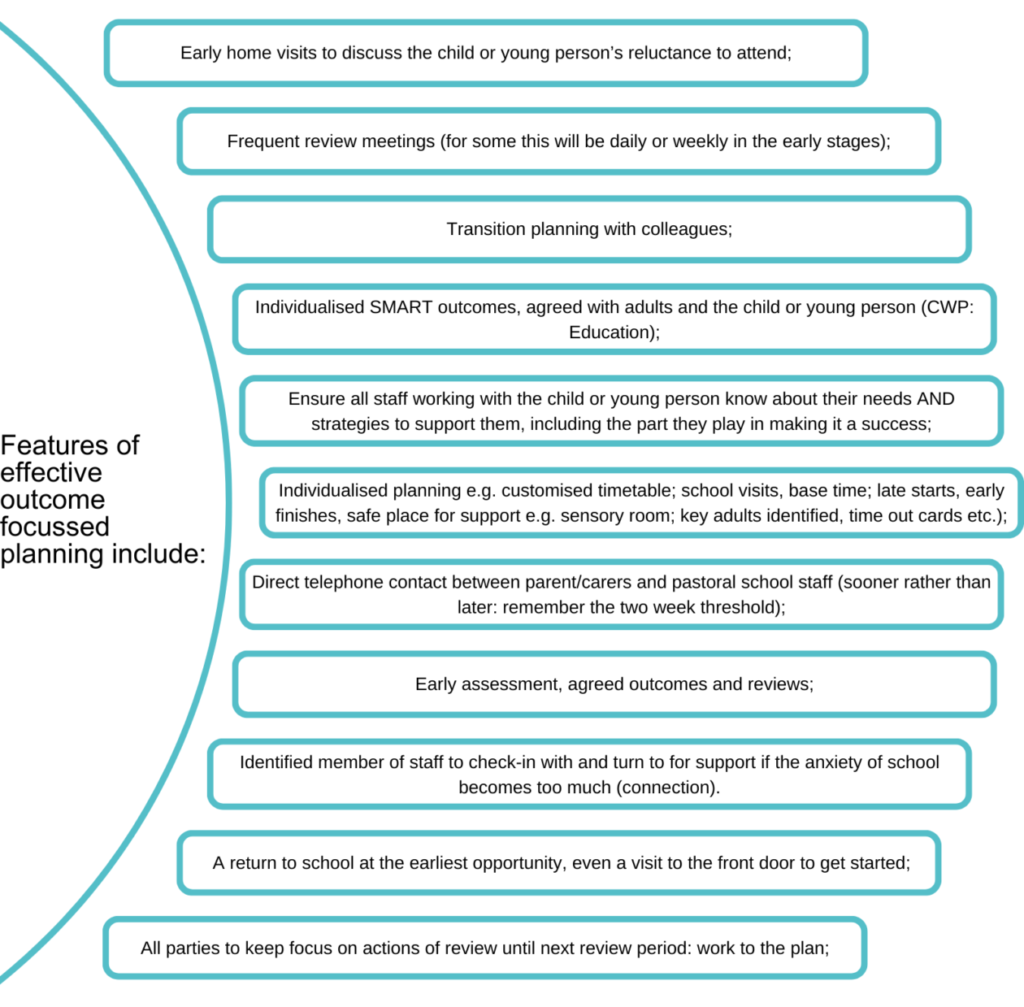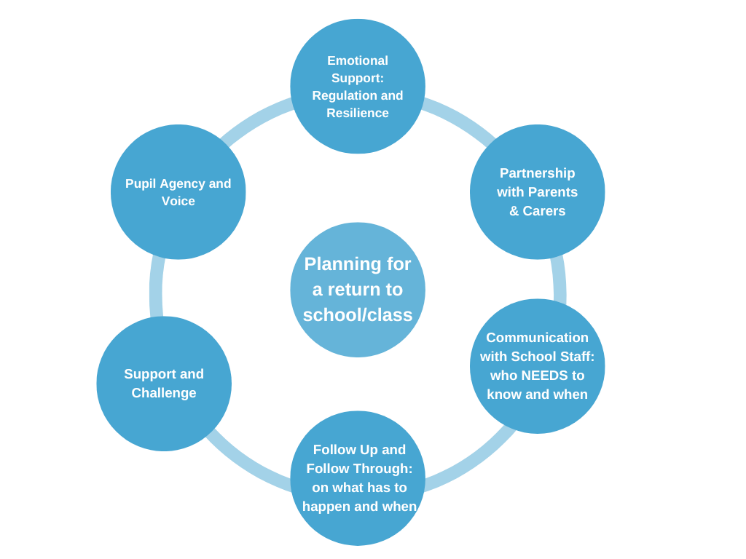Once there is a good understanding of why a child or young person is not attending school, specific achievable outcomes and actions should be agreed by everyone involved to support a return to school. Often the first goal is to stabilise the situation to avoid it worsening. The return often needs to be gradual and stepped, as a ‘quick fix’ is not always possible. An example of a stepped approach to planning is shown on p.26, Figure Seven.
Implementing the plan can be difficult and is to be anticipated. Maintaining a solution-focussed stance will allow for small successes to be recognised and other options to emerge should there be bumps in the road at any point. Views may differ as to what is a priority, so practitioners need to be ready for negotiation and collaboration with the young person and their family.

Each situation will be different and will require a tailored response. This is part of the challenge with EBSA, as every young person requires something a little bit different and a big bit customised. As a practitioner, being resilient and persistent is key at this stage. An overview of key points for the planning process are detailed in Figure Five.
Figure Five: Considerations for planning a return to school


